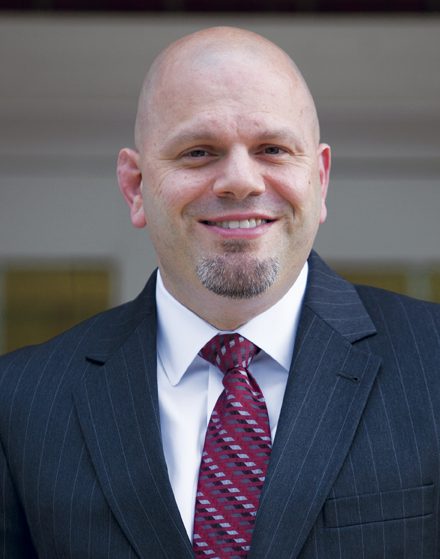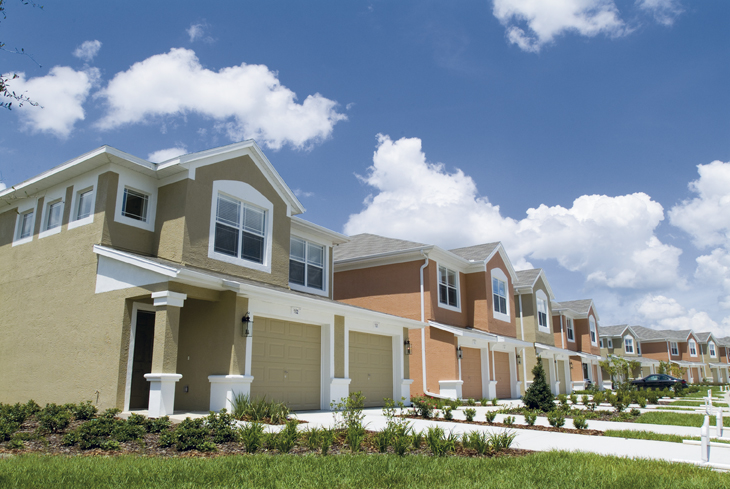FOCUS ON CONDO ASSOCIATIONS
Are condos becoming less popular with younger generations?
By Lori Widmer
According to the Community Associations Institute, in 1970 there were just 10,000 condo community associations. By 2016 that number had skyrocketed to 342,000 associations overseeing 69 million residents across the country. Of those, nearly 55% are homeowners associations and about 45% are condo associations.
It’s a trend that is expected to continue. Data from Statista show that revenue for the apartment and condo construction industry totaled over $38.5 billion in 2015. By 2017 that figure had climbed to $42.9 billion.
How this growth trend is affecting the insurance market for condo and community associations depends on the region, say the experts. Mark McLallen, president of Condominium Insurance Specialists of America and Suburban Insurance Consultants, has seen the impact of higher demand for coverage. “The markets are firming a bit, but very gradually with rate increases in the single digits.”
That same incremental rate increase trend is seen by Rob Mackoul, chief underwriting officer for New Empire Group. He attributes much of the increase to activity in his region. “We have a New York-centric program, so we have seen a lot of rate increases because of the litigation climate. We’ve been fortunate and haven’t yet felt the need for a rate increase, but I have no doubt that it’s something we’d consider if the market were to dictate such a move.”

—Rob Mackoul
Chief Underwriting Officer
New Empire Group
Other pressures on pricing
Although Russell Clark, executive general adjuster with Engle Martin & Associates, says he doesn’t pay much attention to rate increases for condo and community associations, he remarks that the volume of hail and wind damage claims is having an impact on premiums. Clark also says he’s seen coverage changes that will have negative consequences for insureds. “We see high wind and hail deductibles, more roofing claims on actual cash value policies, and cosmetic damage to roofing not being covered.”
What’s driving such changes? Clark cites an increase in the number of public adjusters in states that are vulnerable to hail claims. He also points to a trend that is affecting claims for roof damage. “We are seeing an increase in the number of roofers who specialize in working to extract dollars out of carriers via wind and hail claims,” Clark says.
In fact, both Clark and McLallen cite more vigorous wind and hail claims activity for condo and community associations. McLallen agrees that roofing contractors are a key factor in this trend. “Some roofing companies are using a proactive process to determine if a roof is worn out or if a claim can be filed. The insurance industry hasn’t seemed to get together on how to deal with it.”
Another factor that is putting pressure on pricing is valuations. McLallen says that even in 2019, values are on the rise. He’s seen a 4% to 6% increase in insurable values. “That has an impact on premiums,” he asserts.
How different carriers respond to that increase, he says, will determine the rates. “From what I’ve heard, most carriers are looking to raise rates by just a hair. They really don’t want to back down if they don’t have to.”
That trend, combined with hurricane-related claims, McLallen says, is causing anxiety among carriers. He notes, however, that when hurricanes hit Texas and Florida last year, insurers held their breath waiting for a noticeable impact. Fortunately for the market, he says, this has not happened.
Where the claims are
Weather-related activity in some regions is still driving claims for condo and community associations. In McLallen’s location in Illinois, he says wind and hail are the major sources of claims activity. Mackoul says claims in the Northeast are largely related to water damage. “In our niche, it’s water, water, water all day on the property side. On the liability side, it’s slips and falls and the contractual exposure.”
Like McLallen, Clark sees the majority of condo association claims being related to hail damage. Clark also thinks some of that activity is driven by outside forces. “In many cases these claims are reported late after a roofer approaches a condo or community association and convinces the board members that they have hail damage. We then must determine whether and when hail damage occurred,” he says. “In many cases public adjusters become involved, and eventually the appraisal provision is instituted.”
Although cyber has yet to gain a toehold in the condo association space, Bryan Kohlbecker, general liability product head for Hiscox USA, says it’s coming. The 2019 Hiscox Cyber Readiness Report shows that 53% of responding U.S. government entities reported an attack in 2018, up from 38% the previous year. For that reason, Kohlbecker stresses the importance of preparation. “No industry or business is immune,” he says.
As younger generations come of age, McLallen says, they’re making different choices about housing options, and this trend can adversely affect condo associations. “More apartment buildings are being built than condos. Some of our clients’ properties have been converted back into apartments. We’ve also seen rental percentages creep up.”
Renters, he points out, don’t feel pride of ownership and tend not to worry about a minor issue like a leak until it’s problematic. “Instead of a $1,500 drywall and pipe repair, now we’re looking at a $25,000 mold remediation process,” he says.

—Mark McLallen
President
Condominium Insurance Specialists of America
The role of agents and brokers
An uptick in defense and settlement costs in some regions is putting pressure on agents and brokers to help their clients understand the risks. “Retail agents and brokers can assist in making sure the association has adequate risk management and procedures in place to mitigate potential losses,” says Kohlbecker. “Being proactive in addressing issues can prevent the potential exposure from causing further damage.”
Kohlbecker says he’s seen agents and brokers add value “by assisting clients in reviewing their contracts with service providers to ensure that appropriate risk transfer and hold harmless agreements are in place when contractors, landscapers and snow/ice removal firms are on site.”
Kohlbecker says agents and brokers need to ensure that their clients have the right coverage in place. “To get the best possible program for the insured, I recommend being proactive and getting the submission and all supporting documentation to the carriers at least 60 days prior to the renewal date. This allows enough time for the underwriters to review the submission and ask questions that will assist them in appropriately assessing the risk.”
It’s also important to know your carriers, Mackoul remarks. He recommends that agents work with top-tier carriers that specialize in condo association insurance. “You want the carriers that understand the market.”
Mackoul adds that products should fit the market. He recommends offering niche products from carriers with specialized expertise in the condo association market. “It is much easier to go to someone who knows what you’re dealing with rather than trying to fit a round peg into a square hole.”
 All of this falls into place, McLallen says, when agents and brokers understand their market. He emphasizes that expertise and education are the keys to maintaining a strong book of business in the condo association space. “It’s one thing to put a piece of business on the books. The hard part, and what I think defines success, is to continue to write that business long term. It’s about building value between an agent and a client.”
All of this falls into place, McLallen says, when agents and brokers understand their market. He emphasizes that expertise and education are the keys to maintaining a strong book of business in the condo association space. “It’s one thing to put a piece of business on the books. The hard part, and what I think defines success, is to continue to write that business long term. It’s about building value between an agent and a client.”
That value, McLallen notes, is demonstrated when a loss occurs and a client remembers advice from the agent that reduced or eliminated the impact. McLallen also advocates for regular contact with clients, not just at renewal time, so clients can see their coverage picture over the long term. “It’s very easy to take your eye off the ball,” he says. “Staying in front of and providing value for your client is more than just a number at the bottom of the page. That’s what defines a successful relationship.”
For more information:
Condominium Insurance Specialists of America
www.cisainsurance.com
Engle Martin & Associates
www.englemartin.com
Hiscox USA
www.hiscox.com
New Empire Group
www.newempiregroup.com
The author
Lori Widmer is a Philadelphia-based writer and editor who specializes in insurance and risk management.





